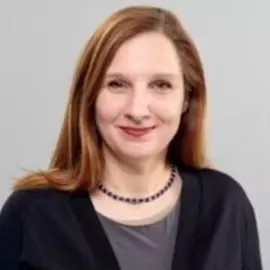The Size and Structure of the Swiss Occupational Therapy Workforce (Arbeitsplätze)

Result
Results
In total, data were collected from 968 respondents, covering 3'022 Swiss occupational therapists. The response rate was 73.6% for medical institutions and 58.2% for outpatient practices. In terms of gender distribution, men only make up 9.7% of the Swiss occupational therapy workforce, with women making up 90.1%, while 0.2% do not identify with either gender. The percentage of men is higher in management positions (15.5%). Swiss occupational therapists most often work with clients who have difficulties in connection with injuries or illnesses of the upper limbs, neurological illnesses or injuries, and mental health. The ratio of occupational therapists per 10’000 inhabitants in Switzerland is at least 3.2, with an estimated real ratio of 4.3 – 5.5. Swiss occupational therapy provision is least dense in Central Switzerland. The average reported turnover rate among occupational therapy teams was calculated as 20.0 (SD=27.9).
The low percentage of men working as occupational therapists (9.1%) is more pronounced than in other health professions in Switzerland, like nursing and physiotherapy It is also more pronounced than the percentage of men working as occupational therapists in the countries bordering Switzerland. While Swiss occupational therapists have a similar percentage of practitioners with a Bachelor’s degree or higher than physiotherapists, the percentage of physiotherapists with an Master’s degree is more than twice as high than among occupational therapists. Occupational therapy provision in Switzerland is denser than in Italy or France, similar to Austria, and less dense than Germany. It also differs by region and area of practice.
In conclusion, the results illustrate the persistent lack of gender diversity in the profession, and a rate of practitioners with a Master’s degree or higher that is still low compared to similar professions. They also show some differences in occupational therapy provision in terms of geography and area of practice. We have examined these issues further in a series of articles (see references). The data is available in anonymized form as Open Research Data on the SWISSUbase registry (see references).
Description
Background
The shortage of skilled workers in the health professions is also present in occupational therapy. In order to determine the need for occupational therapists in the various regions and fields of practice in Switzerland, to plan study places and to make political decisions, empirical data on the number and structure of current occupational therapy jobs are important. Such data can both identify gaps in care provision and support the planning of measures to ensure that institutions have the right number of workers with the right skills available at the right time.
Aim
The aim of the study is to generate empirical data on the number and structure of occupational therapy workplaces in Switzerland, which have been lacking up to now.
Method
As part of a consortium of the three universities ZHAW, HES-SO and SUPSI, the Swiss Occupational Therapists Association (EVS/ASE) and the Foundation for Occupational Therapy, the ZHAW Institute of Occupational Therapy Research Unit conducted an online survey in all language regions of Switzerland. The survey was aimed at: - Employers of occupational therapists, - heads of occupational therapy teams, - self-employed occupational therapists. The researchers collected data on the number and structure of occupational therapy workplaces in Switzerland - in terms of - socio-demographic characteristics, - their level of training, - the geographical and regional distribution of workplaces, - occupational therapy fields of practice, - as well as other topics. Quantitative data were analysed using descriptive statistics and regression analysis. In addition, the researchers described qualitative data - from open questions - narratively.
Key data
Projectlead
Deputy Projectlead
Project team
Ines Wenger, Selina Marita Egger, Prof. Dr. Christina Schulze, Stefania Moioli (Scuola universitaria professionale della Svizzera italiana SUPSI), Brigitte Eggenberger (ErgotherapeutInnen-Verband Schweiz EVS), Prof. Dr. Nicolas Kühne (Haute école spécialisée de Suisse occidentale HES-SO), Andrea Petrig (ErgotherapeutInnen-Verband Schweiz EVS), Andre Bürki (†) (ErgotherapeutInnen-Verband Schweiz EVS)
Project partners
ErgotherapeutInnen-Verband Schweiz EVS; Haute école spécialisée de Suisse occidentale HES-SO; Scuola universitaria professionale della Svizzera italiana SUPSI
Project status
completed, 11/2018 - 01/2024
Institute/Centre
Institute of Occupational Therapy (IER)
Funding partner
Stiftung für Ergotherapie Zürich
Further documents and links
Publications
-
Ergotherapeut*innen engagieren sich für die Entwicklung ihres Berufsstandes
2024 Moioli, Stefania; Ballmer, Thomas Michael; Kühne, Nicolas; Petrig, Andrea Marlies; Eggenberger, Brigitte; Gantschnig, Brigitte
-
Formation des ergothérapeutes en Suisse
2024 Kühne, Nicolas; Ballmer, Thomas Michael; Eggenberger, Brigitte; Moioli, Stefania; Petrig, Andrea Marlis; Gantschnig, Brigitte
-
Rekrutierung von Ergotherapeut*innen in der Schweiz
2024 Hubschmid, Andrea Verena; Gantschnig, Brigitte Elisabeth; Ballmer, Thomas Michael; Andersen, Mette
-
Innovatively addressing the profession's major questions based on studies of the OT workforce
2024 Gantschnig, Brigitte; Ballmer, Thomas; Petrig, Andrea; Moioli, Stefania; Kühne, Nicolas
-
Wie lösen wir grosse Fragen unseres Berufs innovativ?
2024 Gantschnig, Brigitte; Ballmer, Thomas; Moioli, Stefania; Petrig, Andrea Marlis; Eggenberger, Brigitte; Kühne, Nicolas
-
Wie lösen wir grosse Fragen unseres Berufs innovativ? : Workshop zu den Ergebnissen der nationale Studie über die Anzahl und Struktur der Ergotherapie-Arbeitsplätze in der Schweiz
2024 Gantschnig, Brigitte Elisabeth; Ballmer, Thomas Michael; Petrig, Andrea Marlis; Kühne, Nicolas; Eggenberger, Brigitte; Moioli, Stefania
-
Angaben zu den Arbeitsverhältnissen der Ergotherapeut*innen in der Schweiz
2023 Petrig, Andrea Marlis; Ballmer, Thomas Michael; Kühne, Nicolas; Eggenberger, Brigitte; Gantschnig, Brigitte
-
Charakteristiken von Ergotherapeut*innen in der Schweiz
2023 Gantschnig, Brigitte Elisabeth; Ballmer, Thomas Michael; Moioli, Stefania; Petrig, Andrea; Eggenberger, Brigitte; Kühne, Nicolas
-
Berufsrelevante Erkenntnisse zur Förderung der Ergotherapie
2023 Eggenberger, Brigitte; Ballmer, Thomas Michael; Kühne, Nicolas; Moioli, Stefania; Petrig, Andrea; Gantschnig, Brigitte
-
Verteilung der Ergotherapeut*innen in der Schweiz
2023 Ballmer, Thomas; Kühne, Nicolas; Petrig, Andrea; Eggenberger, Brigitte; Gantschnig, Brigitte
-
The size and structure of the Swiss occupational therapy workforce : a survey study
2023 Ballmer, Thomas; Kühne, Nicolas; Petrig, Andrea Marlis; Eggenberger, Brigitte; Moioli, Stefania; Gantschnig, Brigitte E.
-
Wer sind wir und wenn ja, wie viele?
2021 Moioli, Stefania; Kühne, Nicolas; Egger, Selina Marita; Gantschnig, Brigitte; Ballmer, Thomas Michael; Eggenberger, Brigitte; Petrig, Andrea
